Main Content
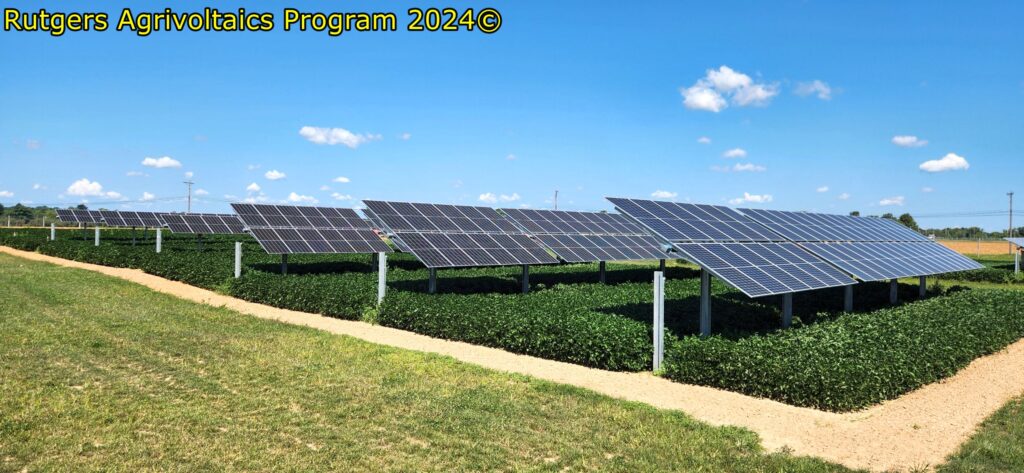
In addition to the specialty crops research, members of the RAPS Team are also studied the effects of Agrivoltaic systems on soybean production at RAREC in southern New Jersey in 2024. On Oct 6, 2023, a rye (variety not stated) cover crop was established at 2 bu./A and terminated on 29 April 2024 with Round-up at 1 qt/A. On June 9, pre-plant fertilizer (14-4-14) at 60 lbs/N per acre was broadcasted and soil was worked prior to soybean seeding. On 11 June, soybeans (AG42XF1, ASGROW) were seeded at a rate of 160,000 seed/A in each of two AV blocks each containing a double panel AV system, single panel AV system, and no panels (the same AV layout as the specialty crop study). On June 12, a pre-emergent herbicide application of Lorox at 1.0 lb/A + Dual Magnum at 1.0 pt/A was applied.
Each block consists of a double panel array, single panel array , and no panel system. Each whole plot contains three rows of AV panels spaced 34 ft apart that are 74 ft long (4,736 total sq. ft). The distance (space) between each whole plot are 34 ft which act as a break. The total area of each block is 272 ft long by 74 ft wide (20,128 sq ft or 0.462 A) (Figure 2).
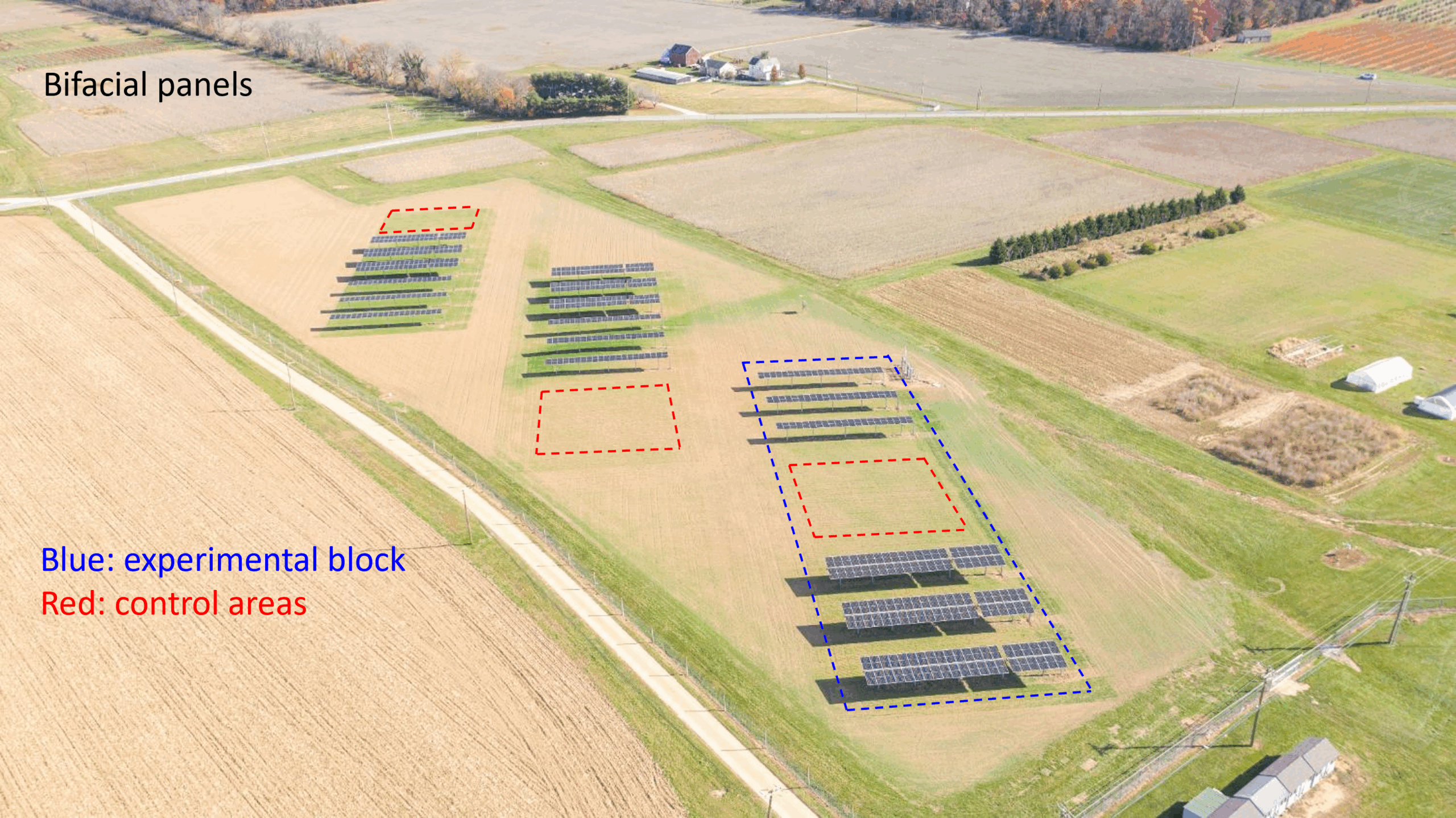
Supplemental overhead irrigation was applied regularly to all soybean plots during the production season. As a note, southern New Jersey had one of the driest late summer, early fall periods on record in 2024. On 7 November, all soybeans were harvested by harvesting (e.g. yield) and collecting subsamples (e.g., protein, oil and moisture content) from three different locations in each sub-plot based on their proximity to the solar panel (East side of sub-plot, center of sub-plot, and west side of subplot (Figures 4 and 5) to determine yield, percent moisture, and protein + oil.
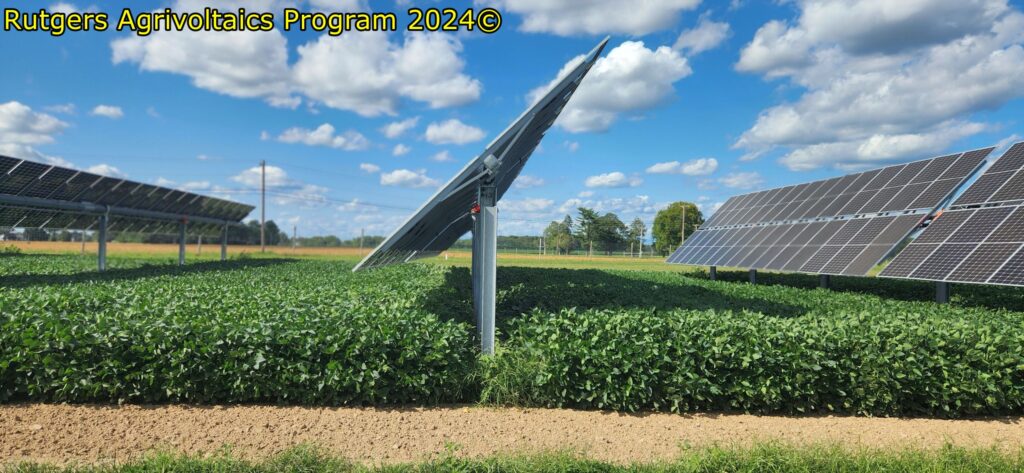
A pass of the small research combine with a 5 ft head was used to harvest a 65 ft long section on the east, center of, and west side of each sub-plot (Figures 4 and 5).
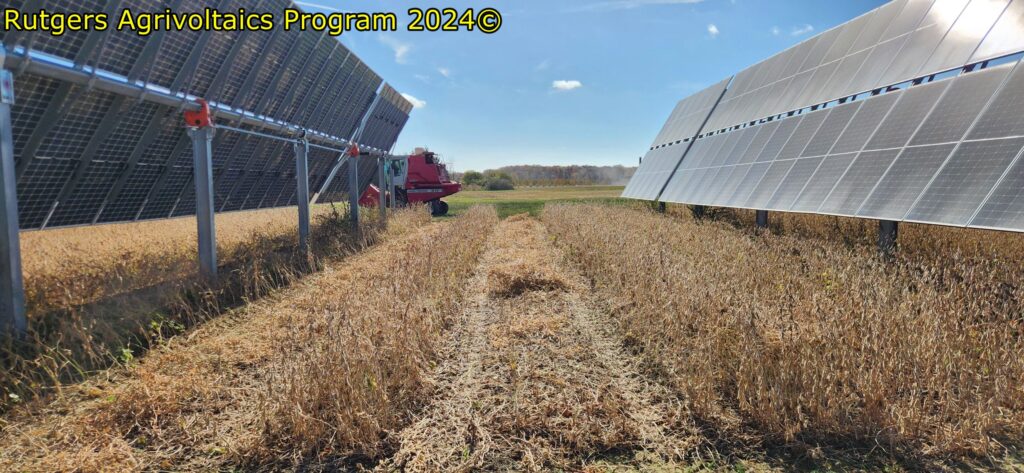
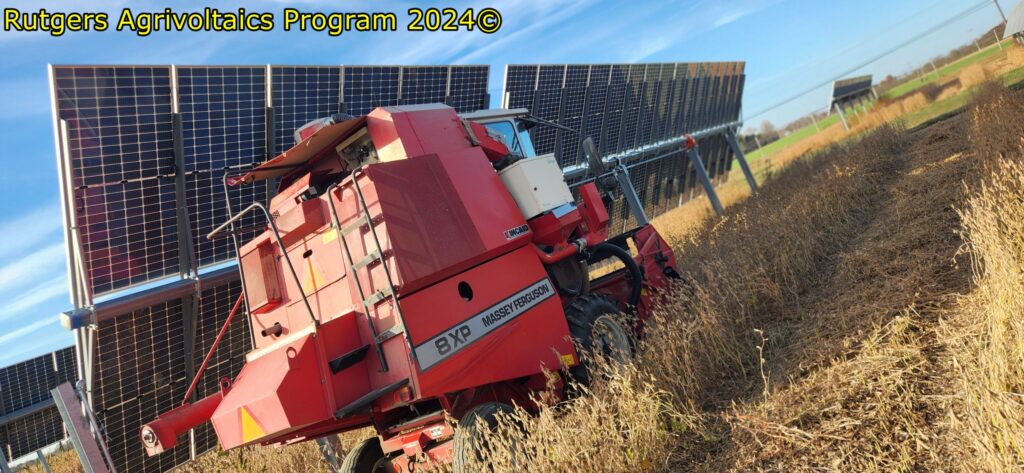
Significant differences (P = 0.0114) in yield (ton/A) were observed among the three array treatment types (Figure 6). Soybeans growing under the single or double AV panels produced significantly higher yields (ton/acre) compared to the control (no panel) (Figure 6). There was no significant differences in yield between the single and double AV panels (Figure 6). Analysis of the effects of East-West position and distance from the center point between the array panels row detected no significant main effects, nor interactions, in the first year of this study.
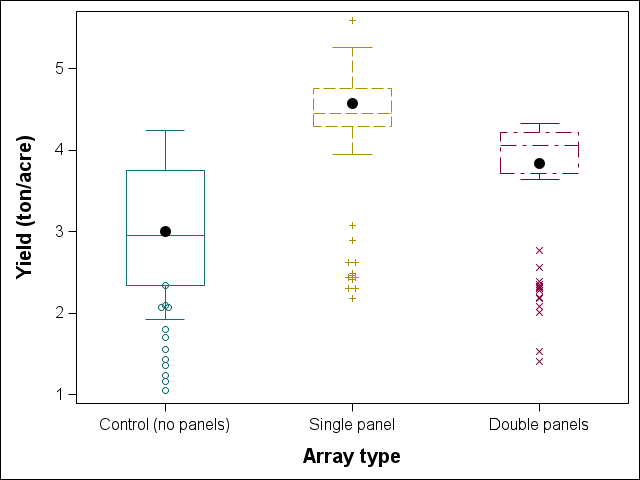
Protein plus oil content were not significantly different among treatments or for any of the interactions tested in the first year of this study (Figure 7).
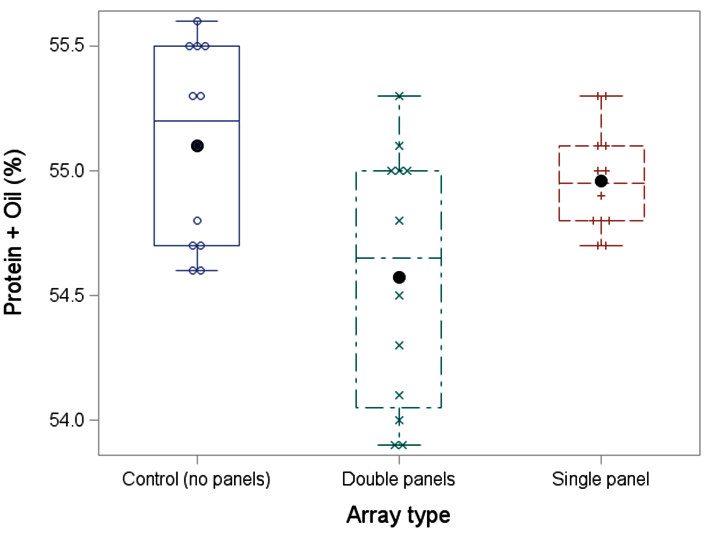
Soybean moisture content was not significantly different among treatments or any of the interactions tested (Figure 8). On average, the soil moisture content in the control (no panel), single AV, and double AV panel sub-plots was approximately 13% in the first year of this study (Figure 8).

The results presented above of the first year of soybean agrivoltaics research at RAREC are preliminary and should not be used to draw any definitive conclusions about the effects of agrivolatiac panels on soybean production, much more research needs to be done.